Archaeology & Ancient History / Rome & the Roman Provinces
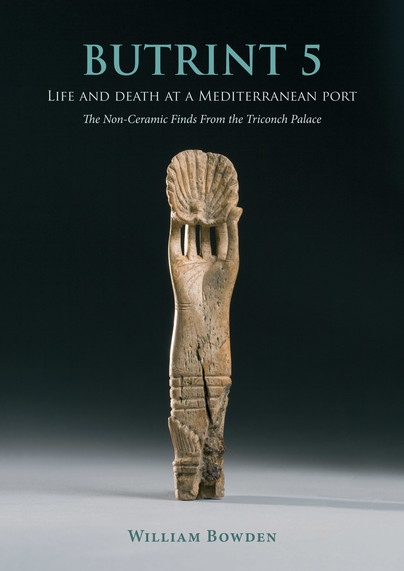
Format: Hardback
Pages: 376
ISBN: 9781785708978
Pub Date: 31 Dec 2019
Series: Butrint Archaeological Monographs
Illustrations: b/w and colour
Description:
This is the second volume arising from the 1994–2003 excavations of the Triconch Palace at Butrint (Albania), which charted the history of a major Mediterranean waterfront site from the 2nd to the 15th centuries AD. The sequence (Butrint 3: Excavations at the Triconch Palace: Oxbow, 2011) included the development of a palatial late Roman house, followed by intensive activity between the 5th and 7th centuries involving domestic occupation, metal-working, fishing and burial. The site saw renewed activity from the 10th century, coinciding with the revival of the town of Butrint, and for the following 300 years continued in intermittent use associated with its channel-side location.
This volume reports on the finds from the site (excluding the pottery), which demonstrate the ways in which the lives, diet and material culture of a Mediterranean population changed across the arc of the late Roman and Medieval periods. It includes discussion of the environmental evidence, the human and faunal remains, metal-working evidence, and the major assemblages of glass, coins and small finds, giving an insight into the health, subsistence base and material culture of the population of a Mediterranean site across more than 1000 years. The findings raise important questions regarding the ways in which changes in the circumstances of the town affected the population between Late Antiquity and the Middle Ages. They illustrate in particular how an urban Roman centre became more rural during the 6th century with a population that faced major challenges in their health and living conditions.
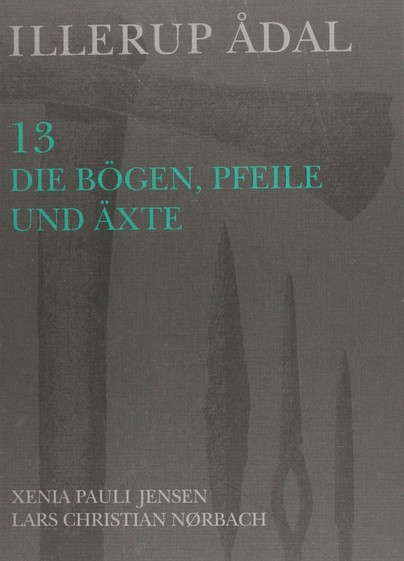
Format: Hardback
Pages: 288
ISBN: 9788788415629
Pub Date: 31 Dec 2019
Description:
Illerup Ådal Vol. 13 discusses the relationship between the use of weapons in war and the civilian use of bow and arrow for hunting or axes as a tool for daily tasks. Xenia Pauli Jensen writes about bows and arrows, and Lars Christian Nørbach analyses the axes and the production of them.
Also includes chapters on the use of wood in weapons.
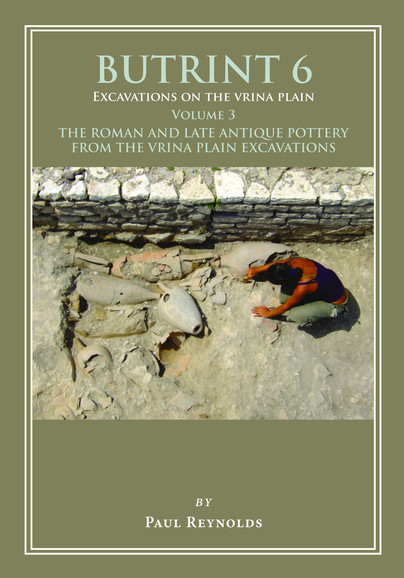
Format: Hardback
Pages: 336
ISBN: 9781789252217
Pub Date: 31 Oct 2019
Series: Butrint Archaeological Monographs
Illustrations: b/w and colour
Description:
Butrint 6 describes the excavations carried out on the Vrina Plain by the Butrint Foundation from 2002–2007. Lying just to the south of the ancient port city of Butrint, these excavations have revealed a 1,300 year long story of a changing community that began in the 1st century AD, one which not only played its part in shaping the city of Butrint but also in how the city interacted and at times reacted to the changing political, economic and cultural situations occurring across the Mediterranean World over this period. Volume III discusses the Roman and Late Antique pottery from the Vrina Plain excavations.
This detailed study of the ceramics follows the archaeological sequence recovered from the excavations in chronological order and provides a comprehensive and in depth review of the pottery, context by context, offering an important insight into the supply, as well as typology, of local and imported pottery available to the inhabitants of the Vrina Plain during this period. This is followed by a discussion on how the pottery trends found on the Vrina Plain relate to that of other sites in Butrint, both within the town (Triconch Palace; the Forum) and outside (Vrina Plain training school villa excavations; the villa of Diaporit). The volume also presents an overview of some of the principal typological developments found across Butrint so as to allow the reader to place the Vrina finds in context, including a discussion of a number of key contexts from the Forum, as well as the findings from thin-section petrology of some of the ceramics.
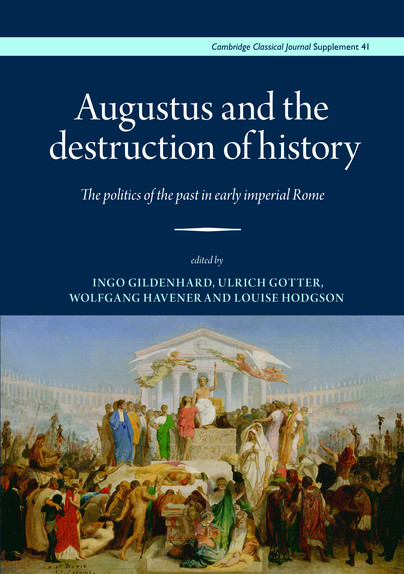
Format: Hardback
Pages: 370
ISBN: 9780956838162
Pub Date: 30 Jun 2019
Series: Proceedings of the Cambridge Philological Society Supplementary Volume
Illustrations: 10 b&w
Description:
Augustus and the Destruction of History explores the intense controversies over the meaning and profile of the past that accompanied the violent transformation of the Roman Republic into the Augustan principate. The ten case studies collected here analyse how different authors and agents (individual and collective) developed specific conceptions of history and articulated them in a wide variety of textual and visual media to position themselves within the emergent (and evolving) new Augustan normal. The chapters consider both hegemonic and subaltern endeavours to reconfigure Roman memoria and pay special attention to power and polemics, chaos, crisis and contingency – not least to challenge some long-standing habits of thought about Augustus and his principate and its representation in historiographical discourse, ancient and modern.
Some of the most iconic texts and monuments from ancient Rome receive fresh discussion here, including the Forum Romanum and the Forum of Augustus, Virgil’s Aeneid and the Fasti Capitolini.
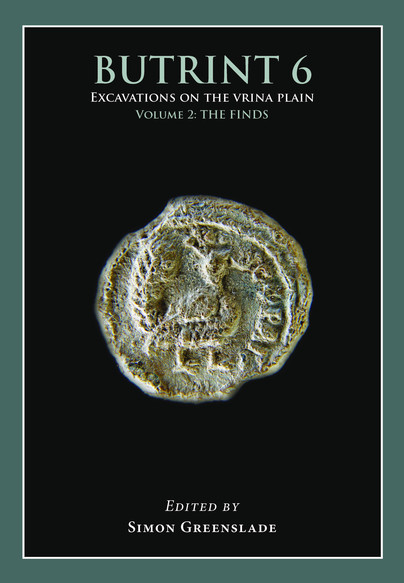
Format: Hardback
Pages: 296
ISBN: 9781789252170
Pub Date: 30 Jun 2019
Series: Butrint Archaeological Monographs
Illustrations: b/w and colour
Description:
Butrint 6 describes the excavations carried out on the Vrina Plain by the Butrint Foundation from 2002–2007. Lying just to the south of the ancient port city of Butrint, these excavations have revealed a 1,300 year long story of a changing community that began in the 1st century AD, one which not only played its part in shaping the city of Butrint but also in how the city interacted and at times reacted to the changing political, economic and cultural situations occurring across the Mediterranean World over this period. Volume II discusses the finds from the Vrina Plain excavations.
This volume provides an insight into how the Vrina Plain community lived, worked and ultimately died and includes chapters on the medieval and post-medieval ceramics from the excavations, analysis of the human and faunal remains, environmental evidence, Roman and Medieval coins, a detailed study of the small finds as well as a discussion of the glass including a report on a number of glass cakes, ingots of raw glass associated with glass working that were found during the excavations. The volume also reports on five lead seals dating from the late 9th to the 10th century, an uncommon find but one which when considered with the contemporary coins suggests that for 100 years the Vrina Plain was Butrint.
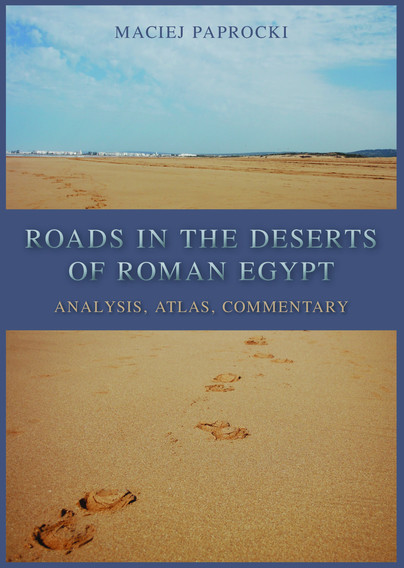
Format: Paperback
Pages: 352
ISBN: 9781789251562
Pub Date: 25 Jun 2019
Illustrations: b/w
Description:
Egypt under the Romans (30 BCE–3rd century CE) was a period when local deserts experienced an unprecedented flurry of activity. In the Eastern Desert, a marked increase in desert traffic came from imperial prospecting/quarrying activities and caravans transporting wares to and from the Red Sea ports. In the Western Desert, resilient camels slowly became primary beasts of burden in desert travel, enabling caravaneers to lengthen daily marching distances across previously inhospitable dunes.
Desert road archaeology has used satellite imaging, landscape studies and network analysis to plot desert trail networks with greater accuracy; however, it is often difficult to date roadside installations and thus assess how these networks evolved in scope and density in reaction to climatic, social and technological change.Roads in the Deserts of Roman Egypt examines evidence for desert roads in Roman Egypt and assesses Roman influence on the road density in two select desert areas: the central and southern section of the Eastern Desert and the central Marmarican Plateau and discusses geographical and social factors influencing road use in the period, demonstrating that Roman overseers of these lands adapted remarkably well to local desert conditions, improving roads and developing the trail network. Crucially, the author reconceptualises desert trails as linear corridor structures that follow expedient routes in the desert landscape, passing through at least two functional nodes attracting human traffic, be those water sources, farmlands, mines/quarries, trade hubs, military installations or actual settlements. The ‘route of least resistance’ across the desert varied from period to period according to the available road infrastructure and beasts of burden employed. Roman administration in Egypt not only increased the density of local desert ‘node’ networks, but also facilitated internodal connections with camel caravans and transformed the Sahara by establishing new, or embellishing existing, nodes, effectively funnelling desert traffic into discernible corridors.Significantly, not all desert areas of Egypt are equally suited for anthropogenic development, but almost all have been optimised in one way or another, with road installations built for added comfort and safety of travellers. Accordingly, the study of how Romans successfully adapted to desert travel is of wider significance to the study of deserts and ongoing expansion due to global warming.
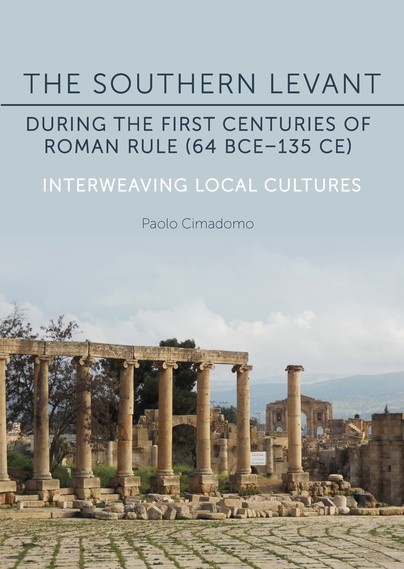
Format: Hardback
Pages: 224
ISBN: 9781789252385
Pub Date: 31 May 2019
Illustrations: b/w
Description:
Starting from the issues of globalisation and recent studies about the mechanisms of absorption of cultures into the Roman Empire, this book focuses on the Near East, an area that has received much less attention than the Western part of the Roman empire in the context of the Romanisation debate. Cimadomo seeks to develop new understandings of imperialism and colonialism, highlighting the numerous and multiple cultural elements that existed in the eastern provinces and raising many questions, such as the bilingualism of ancient societies, the relationship between different cultures and the difficulty of using modern terminologies to explain ancient phenomena. The first focus lies on the area of Galilee and collecting all the evidence for reconstructing the history of the region.
The theme of the ethnicity of the Galileans is very complex, as even the literary evidence of the first centuries BC and AD regarding Galilee doesn’t specify anything about their ethnic identities. The question of the Arabs, their origins and ethnicity is also raised, with a particular focus on the Itureans and the Nabateans. Alongside a complete analysis of the territories they occupied, Cimadomo explores the different artefacts: from the sculptures to the pottery, from the temples to the coins, a picture emerges of an area influenced by different cultures where the inhabitants were able to create their own culture, different from all other parts of the Roman empire. A chapter is devoted to the Decapolis, paying attention to the literary and architectural evidences of each city and their urban development in a little-studied period. An important feature that clearly emerges is the religious nature of the earlier settlements: most of them were probably sanctuaries during the Hellenistic time, and developed only after the coming of the Romans. It was during this development that theatres took a principal role, seemingly the first structures built in every city under Roman rule. It becomes clear that the problems of homogenization and differentiation were present even in the past. Local inhabitants challenged their identity, adapting and modifying foreign impulses, creating new societies and new ways of being Roman.
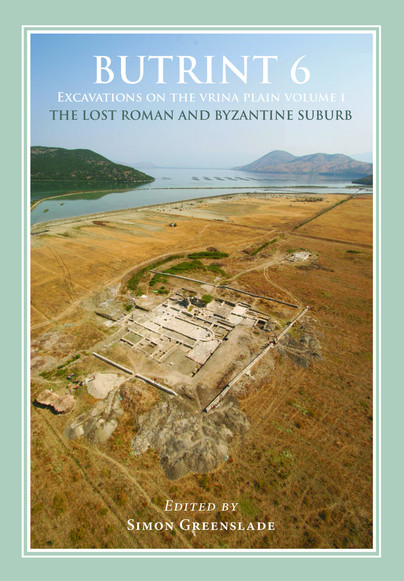
Format: Hardback
Pages: 448
ISBN: 9781789252132
Pub Date: 31 Mar 2019
Series: Butrint Archaeological Monographs
Illustrations: b/w and colour
Description:
Butrint 6 describes the excavations carried out on the Vrina Plain by the Butrint Foundation from 2002–2007. Lying just to the south of the ancient port city of Butrint, these excavations have revealed a 1,300 year long story of a changing community that began in the 1st century AD, one which not only played its part in shaping the city of Butrint but also in how the city interacted and at times reacted to the changing political, economic and cultural situations occurring across the Mediterranean World over this period. Volume I discusses the results from the excavations, tracing the development of the area from an early Roman bridgehead suburb during the 1st and 2nd centuries AD to a major 3rd-century domus, one of the largest of its kind in the province of Epirus Vetus, its transformation into a new residential centre dominated by a Christian basilica in Late Antiquity, to becoming the home of a Byzantine archon during the 9th and 10th centuries when it was, in all but name, Butrint, and its subsequent uses following its abandonment due to the rising water table.
This is followed by a description of the domus mosaics and a detailed examination of the basilica mosaics, analysing the imagery, meaning and context of this intricate and detailed pavement, together with discussions of the Vrina Plain and its place within the story of Butrint and the wider Mediterranean World during the Roman and Byzantine periods.
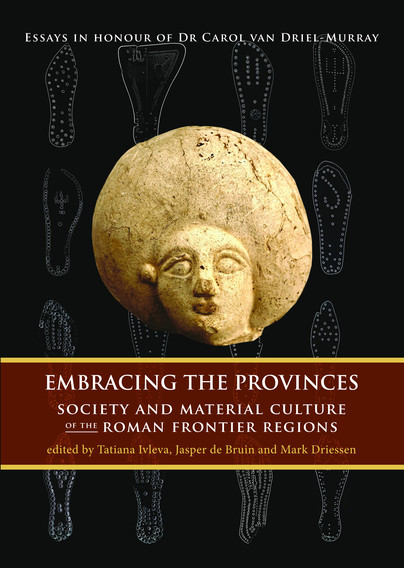
Format: Hardback
Pages: 226
ISBN: 9781789250152
Pub Date: 27 Sep 2018
Description:
Embracing the Provinces is a collection of essays focused on people and their daily lives living in the Roman provinces, c. 27 BC-AD 476. The main aim is to showcase the vibrancy of Roman provincial studies and suggest new directions, or new emphasis, for future investigation of Roman provincial world.
It capitalizes on a wealth of data made available in recent decades to provide a holistic view on life in the Roman provinces by analysing various aspects of daily routine in the frontier regions, such as eating, dressing, and interacting. The contributors, who are acknowledged experts in their fields, make use of innovative interpretations and modern approaches to address current issues in the study of the provinces and frontiers of the Roman Empire.Twenty-one essays are cohesively structured around five themes, encompassing studies on the female and juvenile presence on Roman military sites, Roman provincial cooking, and Roman cavalry and horse equipment. For the first time in the Roman provincial scholarship the volume has a special section on the subject of Roman leather, providing a much-needed overview of the current stance of work. A few papers deal also with experimental archaeology. The essays reflect a wide geographical and chronological range, while retaining thematic consistency, and will be of great interest to those working in Roman archaeology and provincial studies.
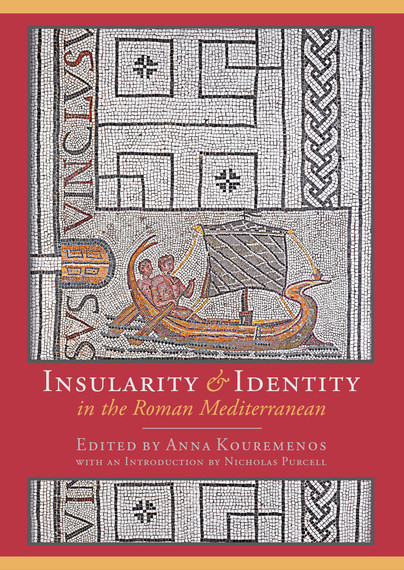
Format: Paperback
Pages: 216
ISBN: 9781785705809
Pub Date: 28 May 2018
Illustrations: b/w
Description:
Insularity – the state or condition of being an island – has played a key role in shaping the identities of populations inhabiting islands of the Mediterranean. As entities surrounded by water and usually possessing different landscapes and ecosystems from those of the mainland, islands allow for the potential to study both the land and the sea. Archaeologically, they have the potential to reveal distinct identities shaped by such forces as invasion, imperialism, colonialism, and connectivity.
The theme of insularity and identity in the Roman period has not been the subject of a book length study but has been prevalent in scholarship dealing with the prehistoric periods. The papers in this book explore the concepts of insularity and identity in the Roman period by addressing some of the following questions: what does it mean to be an island? How has insularity shaped ethnic, cultural, and social identity in the Mediterranean during the Roman period? How were islands connected to the mainland and other islands? Did insularity produce isolation or did the populations of Mediterranean islands integrate easily into a common ‘Roman’ culture? How has maritime interaction shaped the economy and culture of specific islands? Can we argue for distinct ‘island identities’ during the Roman period? The twelve papers presented here each deal with specific islands or island groups, thus allowing for an integrated view of Mediterranean insularity and identity.
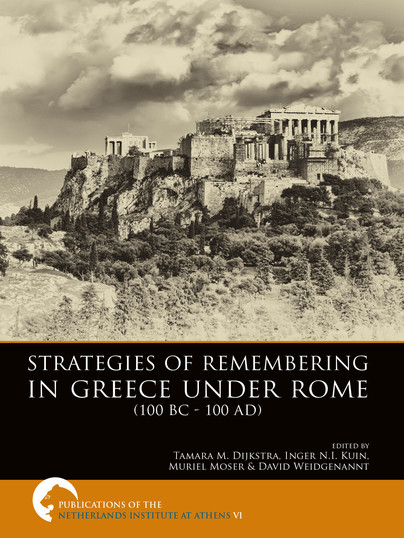
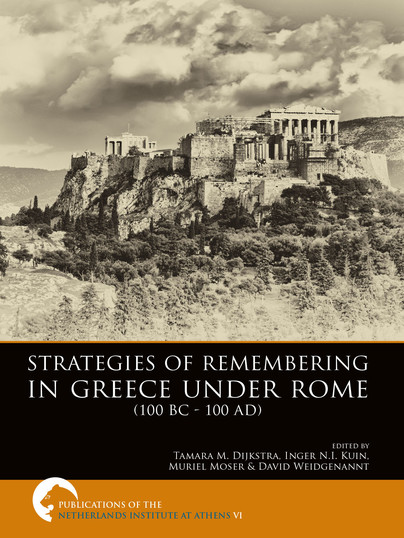
Pages: 285
ISBN: 9789088904813
Pub Date: 12 Dec 2017
Series: Publications of the Netherlands Institute at Athens
Illustrations: 18fc/45bw
Pages: 285
ISBN: 9789088904806
Pub Date: 12 Dec 2017
Series: Publications of the Netherlands Institute at Athens
Illustrations: 18fc/45bw
Description:
At the beginning of the first century BC Athens was an independent city bound to Rome through a friendship alliance. By the end of the first century AD the city had been incorporated into the Roman province of Achaea. Along with Athenian independence perished the notion of Greek self-rule.
The rest of Achaea was ruled by the governor of Macedonia already since 146 BC, but the numerous defections of Greek cities during the first century BC show that Roman rule was not yet viewed as inevitable. In spite of the definitive loss of self-rule this was not a period of decline. Attica and the Peloponnese were special regions because of their legacy as cultural and religious centres of the Mediterranean. Supported by this legacy communities and individuals engaged actively with the increasing presence of Roman rule and its representatives. The archaeological and epigraphic records attest to the continued economic vitality of the region: buildings, statues, and lavish tombs were still being constructed. There is hence need to counterbalance the traditional discourses of weakness on Roman Greece, and to highlight how acts of remembering were employed as resources in this complex political situation. The legacy of Greece defined Greek and Roman responses to the changing relationship. Both parties looked to the past in shaping their interactions, but how this was done varied widely. Sulla fashioned himself after the tyrant-slayers Harmodius and Aristogeiton, while Athenian ephebes evoked the sea-battles of the Persian Wars to fashion their valour. This interdisciplinary volume traces strategies of remembering in city building, funerary culture, festival and association, honorific practices, Greek literature, and political ideology. The variety of these strategies attests to the vitality of the region. In times of transition the past cannot be ignored: actors use what came before, in diverse and complex ways, in order to build the present.
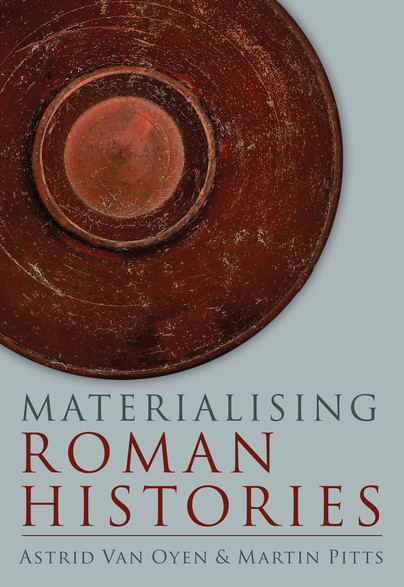
Format: Paperback
Pages: 232
ISBN: 9781785706769
Pub Date: 11 Jul 2017
Series: University of Cambridge Museum of Classical Archaeology Monographs
Description:
The Roman period witnessed massive changes in the human-material environment, from monumentalised cityscapes to standardised low-value artefacts like pottery. This book explores new perspectives to understand this Roman ‘object boom’ and its impact on Roman history. In particular, the book’s international contributors question the traditional dominance of ‘representation’ in Roman archaeology, whereby objects have come to stand for social phenomena such as status, facets of group identity, or notions like Romanisation and economic growth.
Drawing upon the recent material turn in anthropology and related disciplines, the essays in this volume examine what it means to materialise Roman history, focusing on the question of what objects do in history, rather than what they represent. In challenging the dominance of representation, and exploring themes such as the impact of standardisation and the role of material agency, Materialising Roman History is essential reading for anyone studying material culture from the Roman world (and beyond).
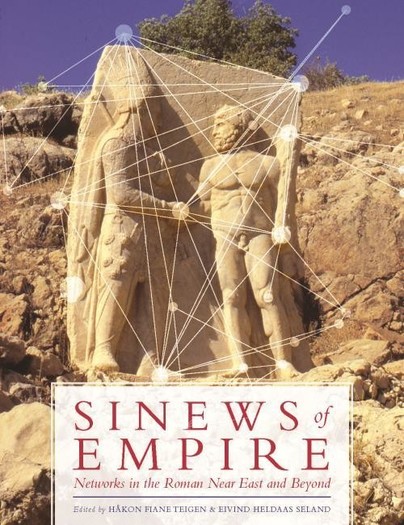
Format: Hardback
Pages: 240
ISBN: 9781785705960
Pub Date: 31 May 2017
Illustrations: b/w
Description:
A recent surge of interest in network approaches to the study of the ancient world has enabled scholars of the Roman Empire to move beyond traditional narratives of domination, resistance, integration and fragmentation. This relational turn has not only offers tools to identify, map, visualize and, in some cases, even quantify interaction based on a variety of ancient source material, but also provides a terminology to deal with the everyday ties of power, trade, and ideology that operated within, below, and beyond the superstructure of imperial rule. Thirteen contributions employ a range of quantitative, qualitative and descriptive network approaches in order to provide new perspectives on trade, communication, administration, technology, religion and municipal life in the Roman Near East and adjacent regions.
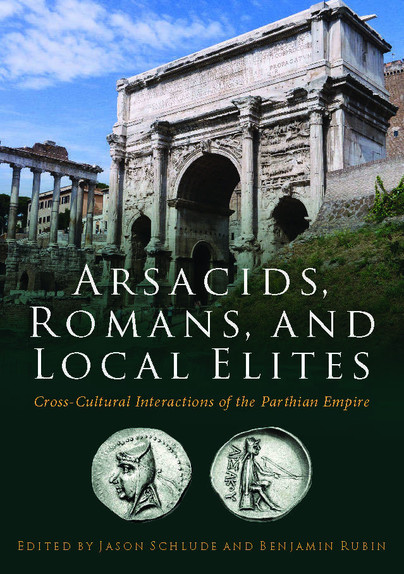
Format: Paperback
Pages: 184
ISBN: 9781785705922
Pub Date: 21 Mar 2017
Illustrations: b/w
Description:
For almost 500 years (247 BCE–224 CE), the Arsacid kings of Parthia ruled over a vast multi-cultural empire, which encompassed much of central Asia and the Near East. The inhabitants of this empire included a complex patchwork of Hellenized Greek-speaking elites, Iranian nobility, and semi-nomadic Asian tribesman, all of whom had their own competing cultural and economic interests. Ruling over such a diverse group of subjects required a strong military and careful diplomacy on the part of the Arsacids, who faced the added challenge of competing with the Roman empire for control of the Near East.
This collection of new papers examines the cross-cultural interactions among the Arsacids, Romans, and local elites from a variety of scholarly perspectives. Contributors include experts in the fields of ancient history, archaeology, classics, Near Eastern studies, and art history, all of whom participated in a multi-year panel at the annual conference of the American Schools of Oriental Research between 2012 and 2014. The seven chapters investigate different aspects of war, diplomacy, trade, and artistic production as mechanisms of cross-cultural communication and exchange in the Parthian empire. Arsacids, Romans, and Local Elites will prove significant for those interested in the legacy of Hellenistic and Achaemenid art and ideology in the Parthian empire, the sometimes under-appreciated role of diplomacy in creating and maintaining peace in the ancient Middle East, and the importance of local dynasts in kingdoms like Judaea, Osrhoene, and Hatra in shaping the geopolitical landscape of the Near East, alongside the imperial powerhouses of Rome and Parthia.
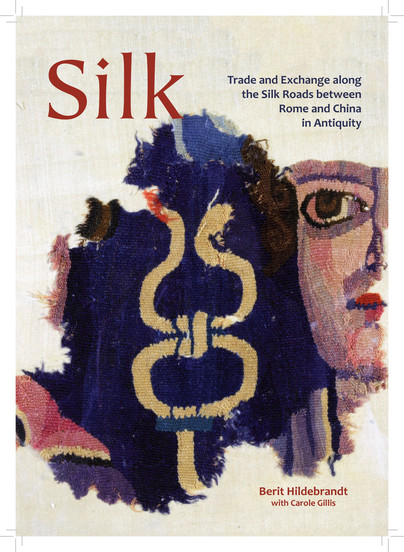
Format: Hardback
Pages: 152
ISBN: 9781785702792
Pub Date: 12 Jan 2017
Illustrations: bw and colour
Description:
Already in Greek and Roman antiquity a vibrant series of exchange relationships existed between the Mediterranean regions and China, including the Indian subcontinent, along well-defined routes we call the Silk Roads. Among the many goods that found their way from East to West and vice versa were glass, wine spices, metals and precious stones as well as textile raw materials and fabrics of wool and silk, a precious fibre that was highly appreciated in many of the cultures along the roads that were named after it by modern scholars. These collected papers bring together current historical, philological and archaeological research from different areas and disciplines in order highlight the use, circulation and meaning of silk as a commodity, gift, tribute , booty, and status symbol in varying cultural and chronological contexts between East and West, including technological aspects of silk production.
Rome and China in antiquity provide the geographical and chronological frame for this volume (c. from the third century BCE to the fifth century CE), but also earlier and later epochs and cultures in between these empires are considered in order to build and intercultural and diachronic understanding of long-distance relations that involved silk.
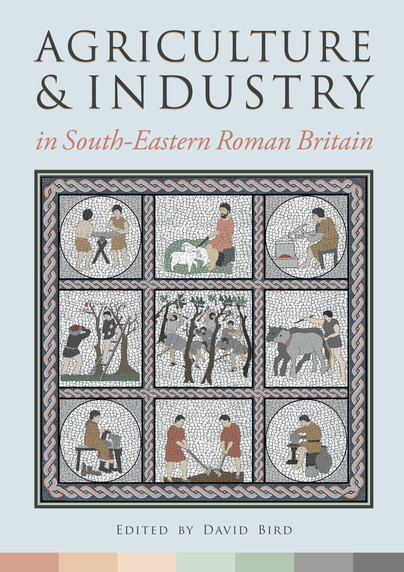
Format: Paperback
Pages: 368
ISBN: 9781785703195
Pub Date: 31 Dec 2016
Illustrations: b/w and colour
Description:
The ancient counties surrounding the Weald in the southeastern corner of England have a strongly marked character of their own that has survived remarkably well in the face of ever-increasing population pressure. The area is, however, comparatively neglected in discussion of Roman Britain, where it is often subsumed into a generalised treatment of the ‘civilian’ part of Britannia that is based largely on other parts of the country. This book aims to redress the balance.
The focus is particularly on Kent, Surrey and Sussex account is taken of information from neighbouring counties, particularly when the difficult subsoils affect the availability of evidence. An overview of the environment and a consideration of themes relevant to the South-East as a whole accompany 14 papers covering the topics of rural settlement in each county, crops, querns and millstones, animal exploitation, salt production, leatherworking, the working of bone and similar materials, the production of iron and iron objects, non-ferrous metalworking, pottery production and the supply of tile to Roman London. Agriculture and industry provides an up-to-date assessment of our knowledge of the southern hinterland of Roman London and an area that was particularly open to influences from the Continent.

















